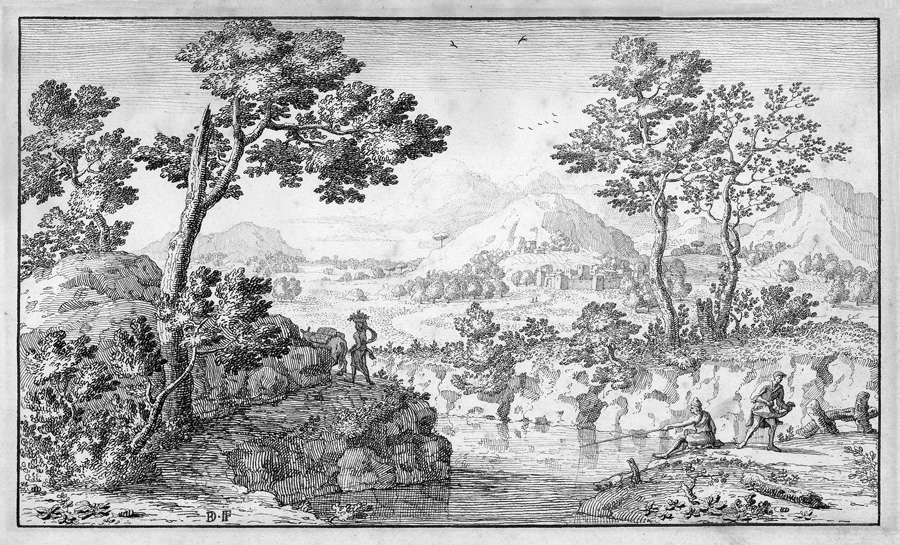Loading the page ...
Dominique Barrière
(1618 Marseilles – 1678 Rome)
Rocky Landscape with Fisherman by River and Artist Sketching; a Campagna Landscape with Staffage Figures. Pen and black ink. Each measuring 16.2 x 25.6 cm. Circa 1646. Monogrammed: “DB IF”.
The draughtsman and etcher Dominique Barrière settled in Rome about 1640, his name being first recorded in 1643 in the parish of San Lorenzo in Lucina, near the artists’ colony around Via del Babuino. Barrière was an engaging Little Master and evidently belonged to the relatively large group of artists who were trying their luck in the Rome of that time and, unlike the big names of their craft such as Claude and Gaspar Dughet, had to struggle to make a living. Although the artist left an extensive oeuvre of over two hundred engravings at his death, he must have lived in great poverty for some of the time, as he repeatedly had to turn to the Collège Saint Louis des Français for help in supporting his large family.
Barrière drew southern landscapes and seascapes in the style of Lorrain and also did engravings after the latter’s paintings. The two present drawings belong to a set of twenty-six drawings which were auctioned at Sotheby’s in London on 10 December 1979. Stylistically they are closely connected with a set of engravings called Différentes veues de mer, which date from the beginning of Barrière’s activity in Rome and were published in Paris in 1646. The very precise and systematic linework and the careful, pictorial mode of the composition suggest that both prints were meant to serve as originals for engravings. However, Marcel Roethlisberger, who has devoted a publication to this group of drawings, maintains that they were not intended for duplication, but for an autonomous album of pen drawings which were to create the false impression of being engravings (see M. Roethlisberger, “Dessins de Barrière et de Guillerot”, Gazette des Beaux-Arts, vol. 129, April 1987, pp. 139–151, figs. 9 and 19).
The subtle nuances of the pen strokes, which proceed from a deep black in the foreground through ever fainter grey tones towards the horizon, create a pleasant chiaroscuro effect and make for an efficient use of space. Despite a certain naivety in the drawing, the compositions are enchanting for their loving attention to narrative detail. The methodical linework, which is very similar to that of the engraving, shows how much the artist owed to the example of Jacques Callot and his school as well as to such Dutch artists as Johannes Glauber, Abraham Genoels and Adriaen van der Cabel.
